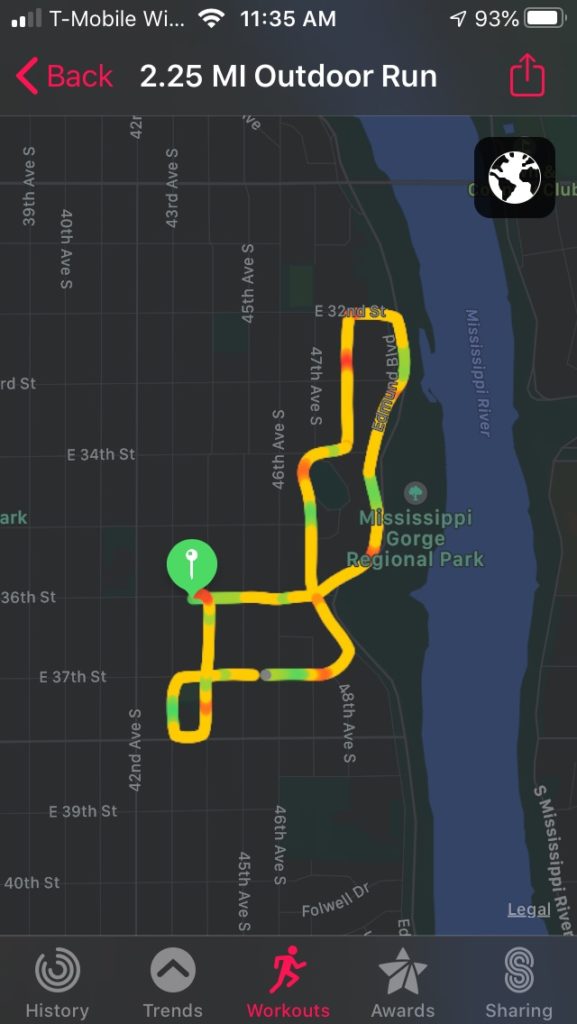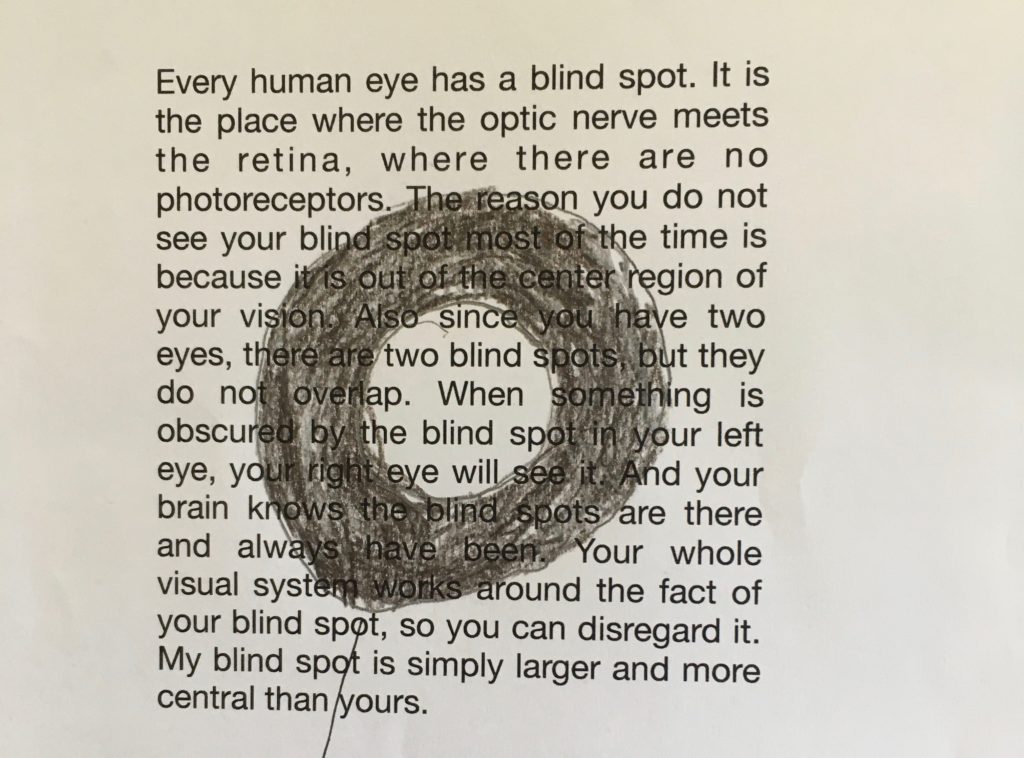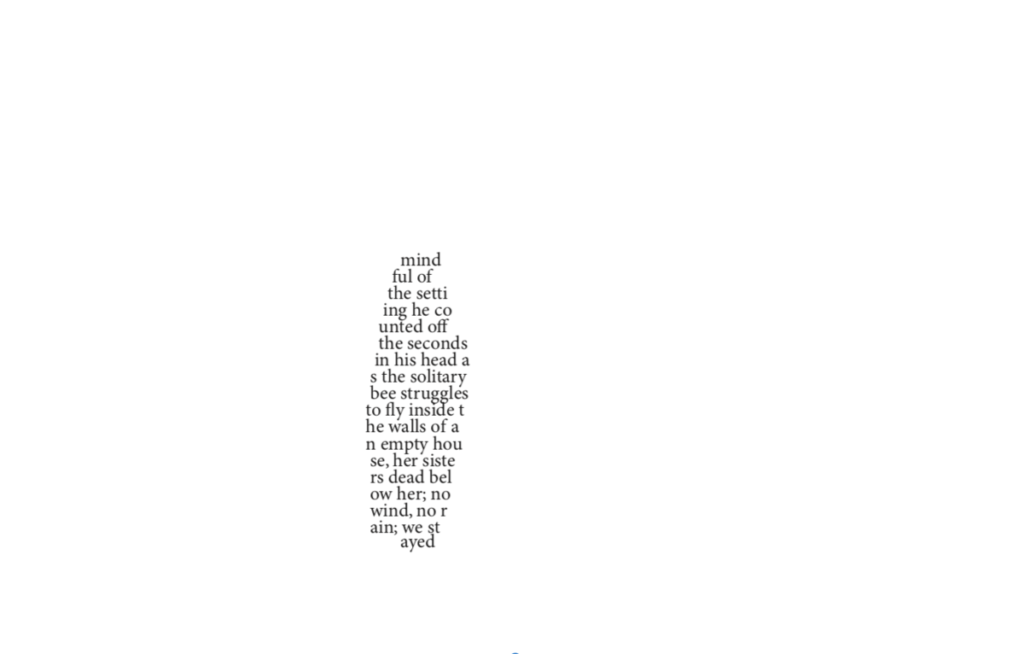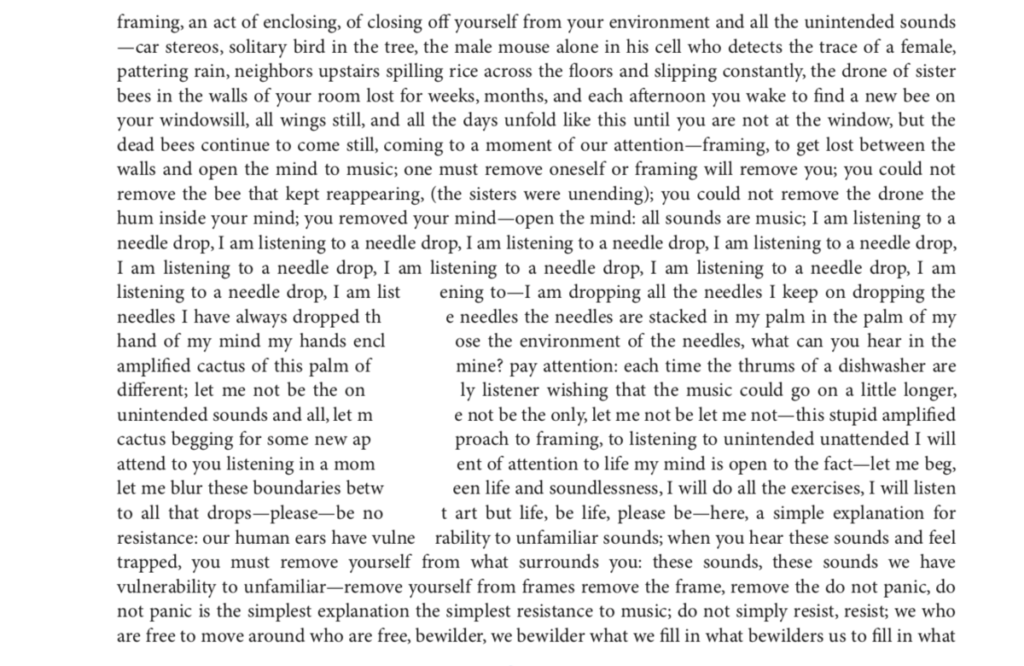3.35 miles
the hill, 4 times
48 degrees
Getting colder. Woke up this morning and turned on the heat, wore running tights under my shorts when I left the house. Did a slower first mile as a warm-up then decided to do the hill, the one where the road is closed and that is above the tunnel of trees, beside the Welcoming Oaks, four times. When I tried this last week, I attempted to sprint up the hill. This time, I just ran continuously, hoping to go a little faster with each hill. I didn’t closely check my watch, so I’m not sure if I did, but I enjoyed the run a lot more, and I didn’t have to stop. I think I’ll try this again next week, but do 5 loops instead of 4. During my warm-up mile, I listened to traffic rushing by a few blocks farther north on Lake Street. As I ran the hills, I listened to a playlist titled, “Sara 2020.” I saw the river, shining blueish-white, through the trees a few times. Beautiful. The second time I ran down the hill, I noticed a runner on the sidewalk over on Edmund. We seemed to be going the same pace. I tried to avoid looking at them instead of speeding up or slowing down. It worked. Saw a women ahead of me walking 2 dogs, talking on her phone or talking to her dogs? Not sure. A few people were wearing bright yellow shirts which glowed in the not quite overcast, not quite sunny light. Did I think about anything? I can’t remember.
MOOD: MISANTHROPIC
Continuing to work on my mood rings. Today I’m thinking about how irritating/frustrating some walkers or bikers or runners are on the trail–refusing to move over, getting in the way, speeding by too quickly. While this has always upset me, it is more dangerous now with my deteriorating vision. People’s carelessness can make it much scarier for me to run or bike. This behavior saddens me, then pisses me off, then causes me to see others as the enemy. I think I’m justified in my frustration, but I’m also bothered by own reactions. For this poem, I want to start by finding as many accounts of my irritation as I can in my running log entries. I’ll either use those as starting off point, to edit and shape, or I’ll combine them somehow into a poem–a cento? an erasure?
Here’s an account (from April 20, 2020) that doesn’t quite fit, because it’s not about me and my encounter with annoying bikers, but that I’d like to work in somehow:
read the FUCKING signs!
Yesterday, Scott, Delia the dog, our daughter, and I took a 4 mile walk around the neighborhood. Walking in the grass between the boulevard and the parkway, we witnessed a runner running in the road (on the part designated for pedestrians), getting increasingly upset as bikers (who are not supposed to bike on this part of the road) whizzed by her. When the first one passed her, she yelled “this is not the bike lane!” and then muttered to herself in anger. When the next one passed, she shrieked frantically “read the FUCKING signs!” (the city has signs posted all over the road/path identifying who should be in what lane). I could understand her anger–in other situations, I’ve been her, maybe not screaming “fuck!” but feeling that upset–but I could also see how difficult it was for the bikers, trying to find room to move when it was so crowded and when walkers were also ignoring the signs and taking over the bike paths. I’m not sure how to make this situation with crowded paths any easier, so I try to avoid it by running early, before it gets crowded.
In honor of the first day of October, I want to post part of one of my favorite October poems by May Swenson:
from October/ May Swenson
Now and then, a red leaf riding
the slow flow of gray water.
From the bridge, see far into
the woods, now that limbs are bare,
ground thick-littered. See,
along the scarcely gliding stream,
the blanched, diminished, ragged
swamp and woods the sun still
spills into. Stand still, stare
hard into bramble and tangle,
past leaning broken trunks,
sprawled roots exposed. Will
something move?—some vision
come to outline? Yes, there—
deep in—a dark bird hangs
in the thicket, stretches a wing.
Reversing his perch, he says one
“Chuck.” His shoulder-patch
that should be red looks gray.
This old redwing has decided to
stay, this year, not join the
strenuous migration. Better here,
in the familiar, to fade.



